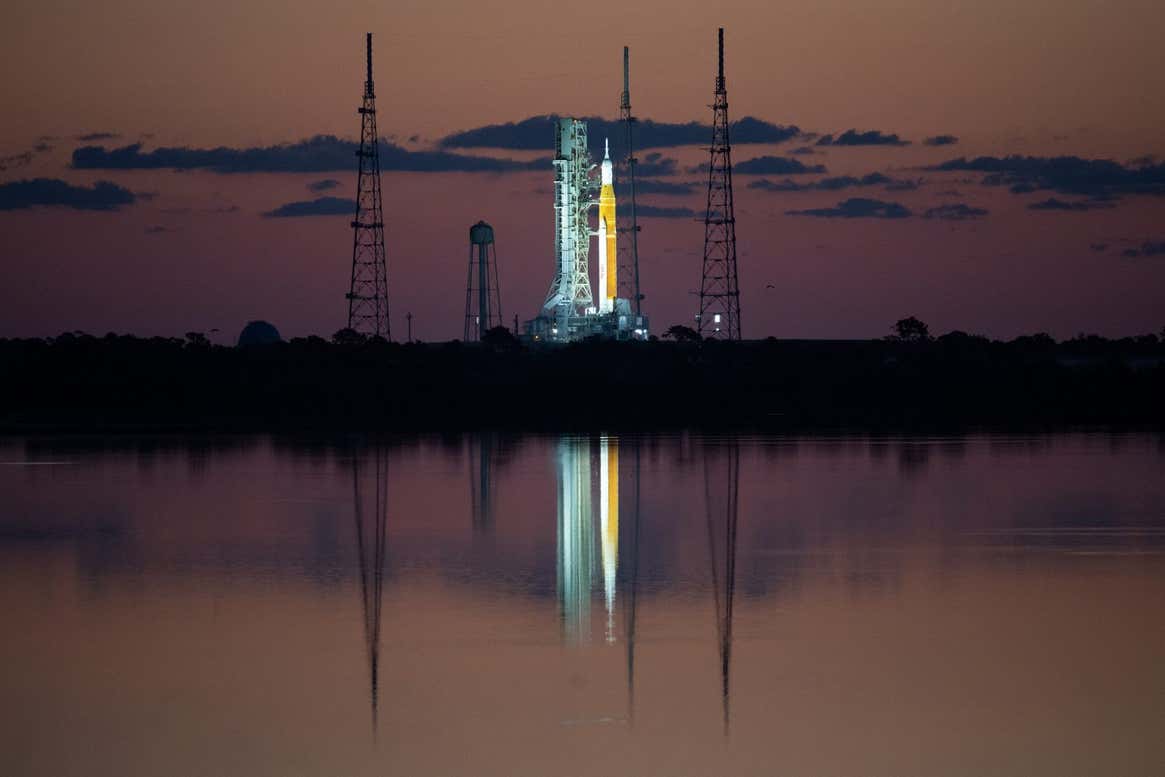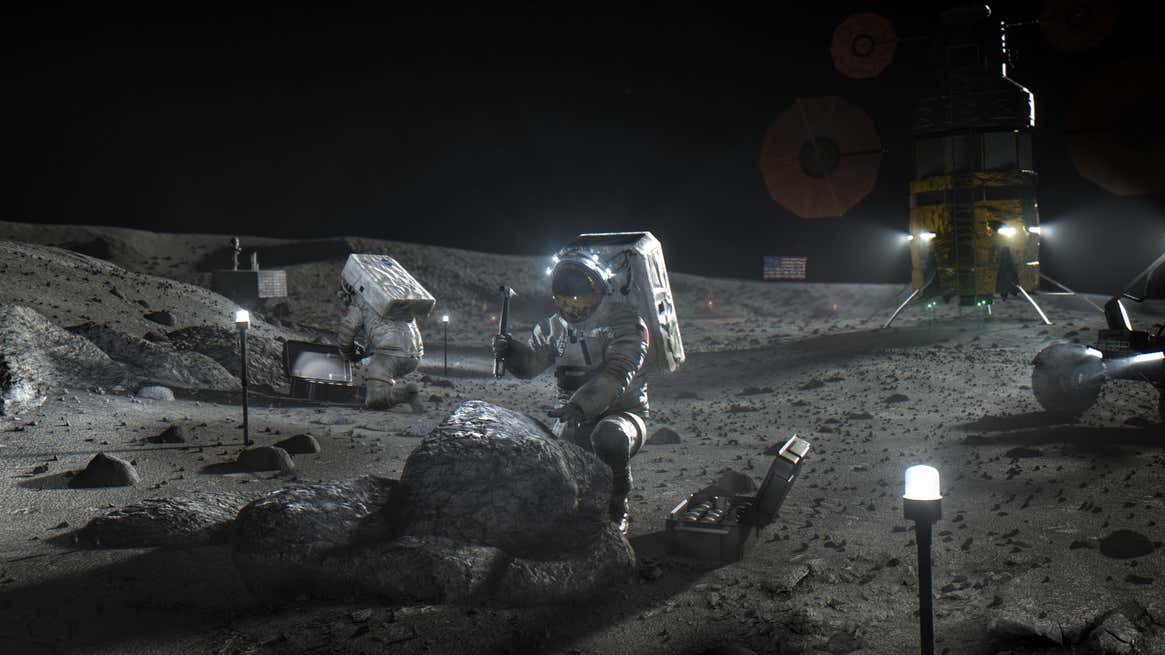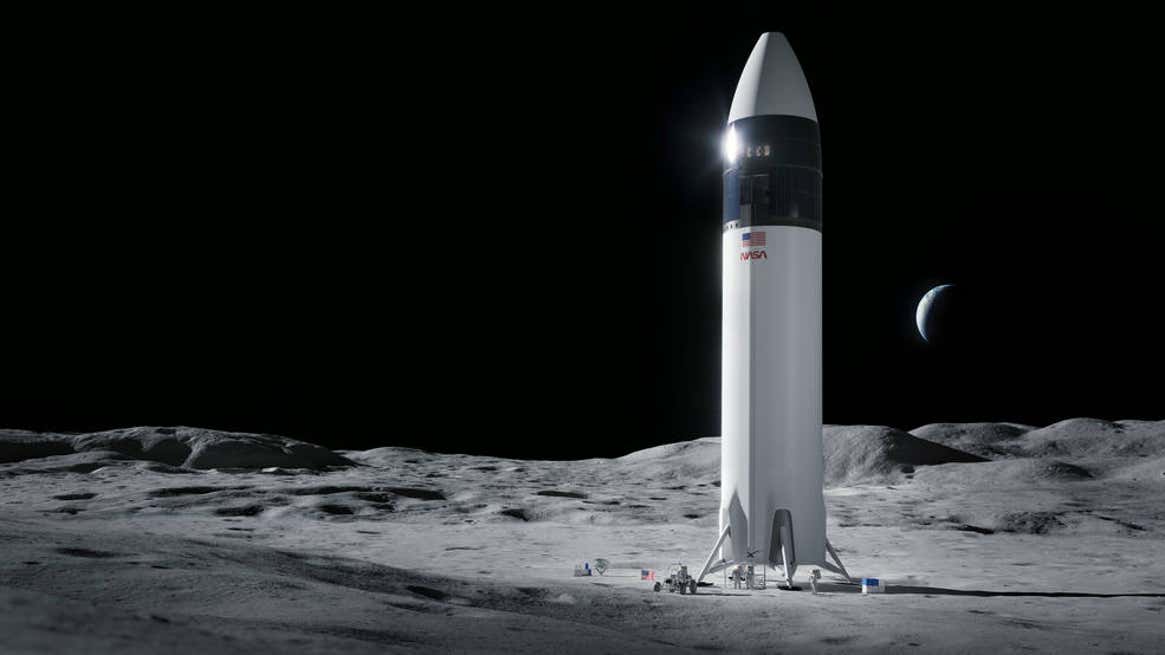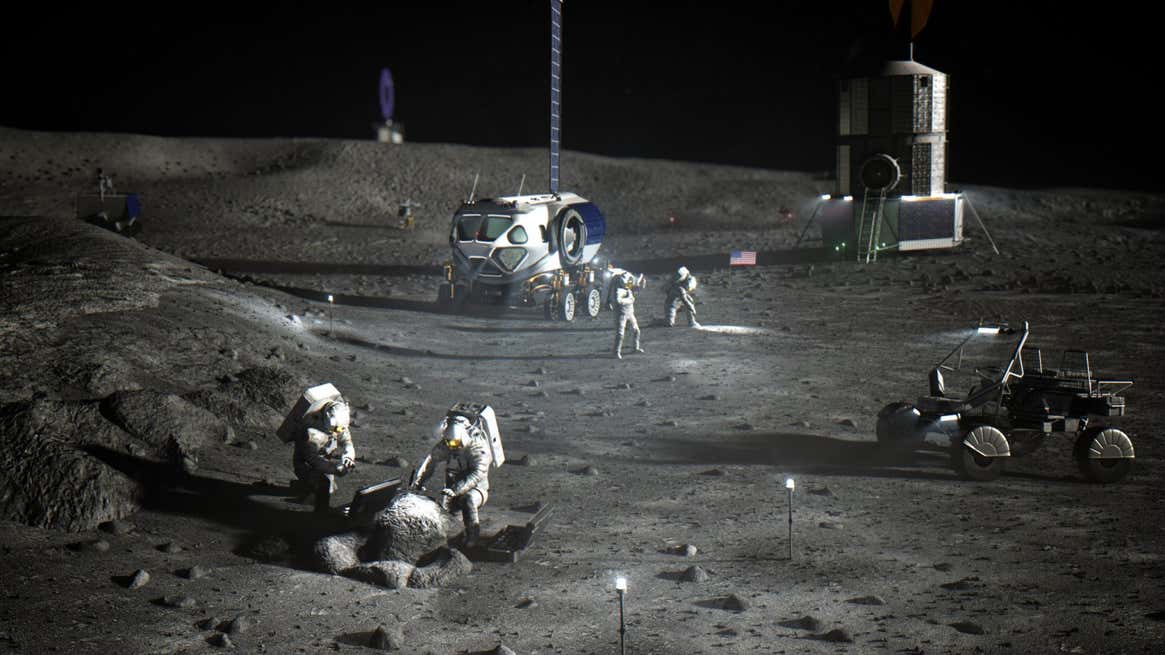Everything you need to know about the Artemis missions, which seek to put a man and a woman on the Moon this decade.
 |
| Image: NASA |
Not since 1972 has a human set foot on the Moon, but NASA is aiming to change that through its ambitious Artemis program. The lunar missions could begin in late 2022, so we’ve assembled this guide to keep you informed and up to date.
This post will be updated continually as new information becomes available.
On December 14, 1972, Apollo 17 astronauts Gene Cernan and Harrison Schmitt said goodbye to the Moon. As they drifted toward Earth, it likely never occurred to them that humans wouldn’t return to the lunar surface for another half-century or more. But this is precisely where we find ourselves today, with the Apollo missions firmly in the history books.
What is NASA’s Artemis project?
Artemis is the program that finally promises to rekindle lunar exploration, as NASA seeks to land a woman and man on the Moon by no earlier than 2025. But there’s a lot more to Artemis than just plopping two people onto the lunar surface. This time, NASA plans to build a sustainable presence on and around the Moon, and to use the program as a stepping stone to the next giant leap: a crewed mission to Mars.
 |
| Photo: NASA/Joel Kowsky |
Announced in 2017, Artemis will “enable human expansion across the solar system,” according to NASA’s Artemis Plan. The Artemis era could involve as many as 11 lunar missions (some crewed and some uncrewed), of which the first five are currently under development.
Long-term goals include the construction of the Lunar Gateway (the first space station in orbit around the Moon) and the installation of Artemis Base Camp (a surface station). Both commercial and international partners will be involved, the latter of which will include the Canadian Space Agency, the European Space Agency, and Japan Aerospace Exploration Agency (JAXA).
Why did NASA choose the name Artemis?
Artemis is the Greek goddess of the Moon and the hunt and the twin sister of Apollo, so it’s a nice call-back to the original crewed lunar missions. In fairness, however, Artemis is a superior name choice for a lunar mission, as Apollo is the Greek god of the Sun. The new name, it could be argued, is a timely correction to a potentially sexist oversight.
Why is NASA going back to the Moon?
Or more simply, the return to our natural satellite is about fostering new scientific discoveries, investigating potential economic benefits, and inspiring a “new generation of explorers,” according to NASA.
Indeed, there’s still lots to learn about the Moon, such as the nature of its origin and its geochemical composition. Importantly, Artemis astronauts are set to explore the Moon’s south polar regions in search of water ice—a key enabler of a sustainable human presence there. Artemis could also carve a path to the commercialization of the Moon, whether it be space tourism or the mining of resources such as rare-earth elements and helium-3.
The part about Artemis being a stepping stone to Mars is also crucial. The technologies and learnings accrued over the course of these missions should make it possible for NASA and its partners to eventually launch a crewed mission to the Red Planet.
What technologies are needed for Artemis?
NASA and its partners, both private and public, are in the midst of developing a slew of new technologies. The Orion spacecraft that will take astronauts to the Moon and back is already developed, but practically everything else still needs to be built. And that includes NASA’s Space Launch System (SLS)—a 322-foot-tall (98-meter) behemoth that NASA calls its “Mega Moon rocket.”
 |
| Image: NASA |
Other key technologies include two different lunar landers, or Human Landing Systems, as NASA refers to them, a lunar spacesuit known as xEMU, an unpressurized lunar rover, the aforementioned Lunar Gateway (which itself will involve multiple elements), and a host of exploration ground systems.
How much will Artemis cost?
A lot. An Inspector General audit from November 15, 2021 found that $40 billion has already been spent on Artemis and that NASA can be expected to spend a total of $93 billion by the end of 2025. Alarmingly, the same report claimed that the first four launches of SLS/Orion will cost an estimated $4.1 billion apiece. Should NASA not be able to reduce this cost, the space agency “will face significant challenges to sustaining its Artemis program in its current configuration,” the Inspector General warned.
Is SpaceX a part of Artemis?
Yes, SpaceX is playing a key role in Artemis. In April 2021, the Elon Musk-led company signed a $2.89 billion contract with NASA to provide a lunar lander for the missions. The company is intending to leverage its upcoming Starship rocket for the platform, which will require the gigantic rocket to perform a vertical landing on the lunar surface.
 |
| Image: SpaceX |
Prior to this, the Starship lander will have to re-fuel in low Earth orbit and link up with Orion to perform the astronaut transfer in lunar orbit. The required technological complexity seems daunting, and we eagerly wait to see if the SpaceX team can pull it off. That said, NASA is seeking a second lunar lander from a yet-to-be determined commercial provider.
Has NASA chosen astronauts for the Artemis missions?
NASA has not yet disclosed the names of astronauts who will take part in the Artemis missions, but the space agency has assembled an initial team of astronauts “to help pave the way for the next lunar missions.” The first crewed Artemis mission won’t happen until 2024 at the earliest, so we’ll probably have to wait to find out who will be involved and in which capacity.
When is the Artemis 1 launch?
No firm date is set for Artemis 1—the uncrewed inaugural launch of the huge SLS rocket. NASA is still in the midst of preparing the rocket for its much-anticipated liftoff, but it could happen in late August.
For this mission, an uncrewed Orion spacecraft will travel to the Moon and return to Earth without performing a lunar landing. Artemis 1 will serve to test the fledgling rocket and Orion under real-mission conditions, setting the stage for a crewed mission.
 |
| Image: NASA |
Artemis 1 will see the deployment of 13 low-cost cubesats and include a trio of manikins designed to measure vibrations and space radiation, along with a vest for protecting astronauts against ionizing radiation.
When is the Artemis 2 launch?
Artemis 2, in which a Orion capsule complete with human crew will travel to the Moon and back without landing, is currently scheduled to happen no earlier than May 2024. The mission will be virtually identical to Artemis 1, save for the presence of four NASA astronauts.
When is the Artemis 3 launch?
Artemis 3 is currently targeted for no earlier than 2025. The plan is to land a man and woman near the Moon’s south polar region, where they will spend nearly a full week exploring the lunar surface. The two remaining crew members will stay aboard the Lunar Gateway, which itself will be connected to Orion. Should all go as planned, an unpressurized rover and other equipment will be placed on the surface in advance of the mission. At least four spacewalks are planned, with a priority placed on the search for water ice.
When is the Artemis 4 launch?
 |
| Image: NASA |
The fourth Artemis mission is currently planned for 2026. Four astronauts will launch to the Lunar Gateway, where they will continue to build-out the lunar outpost. The mission will deliver the European Space Agency’s I-Hab habitat module to Gateway, which will operate in a unique near-rectilinear halo orbit. I-Hab will eventually serve as the main habitat for astronauts when staying on board Gateway. A lunar landing is not expected to happen during this mission.
When is the Artemis 5 launch?
Artemis 5 should launch in 2027. The plan is to send four astronauts to Gateway and then deploy two crew members to the lunar surface. The astronauts will once again explore the south polar region of the Moon.
The mission will also seek to deliver ESA’s ESPRIT (European System Providing Refueling, Infrastructure and Telecommunications) to Gateway. ESPIRIT “will supply enhanced communications, refuelling and a window somewhat like the European-built Cupola observatory on the International Space Station,” according to ESA.
What will happen next?
Artemis missions 6 through 11 are still in the proposal stage, so we’re not entirely certain as to when they’ll launch or what will be involved.
 |
| Image: NASA |
That said, the Gateway will need an airlock, so if Artemis 6 is to happen, the delivery and installation of this component will be be a goal. These late Artemis missions will expand in both scope and ambition and will likely see the installation of a lunar habitats, a pressurized mobile home, among other elements designed to enable humanity’s sustained presence on the Moon. By this stage, lunar adventures could last as long as 45 days.
Should the Artemis program unfold as expected, NASA can then plan for a crewed trip to Mars. The current expectation is for a crew to land on the Red Planet in the late 2030s or early 2040s. A crewed expedition to Mars and back, without a landing, could happen in 2033 to take advantage of an ideal orbital alignment between Mars and Earth.
And from there, the rest of solar system awaits. But it all starts with Artemis.
